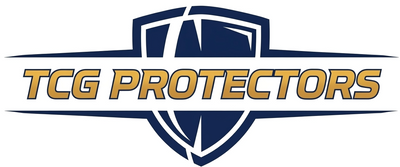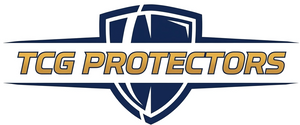For every new Magic: The Gathering player, there's a moment of revelation. It's the point where the game transforms from a simple back-and-forth of casting creatures and attacking into something far deeper and more intricate. This "level up" moment almost always coincides with understanding a single, fundamental concept that governs every action in the game: the stack.
The stack is an invisible, yet all-important, zone in the game. It’s not a physical place on your playmat, but a conceptual waiting room where spells and abilities go before they happen. It’s the difference between a spell simply resolving and a complex, lightning-fast exchange of counters, responses, and triggered abilities that can completely turn the tide of a game.
Many players have a functional, surface-level understanding of the stack—enough to know they can cast a in response to a . But to truly elevate your play, you need to move beyond the basics. A deep understanding of the stack is what separates intermediate players from advanced ones. It unlocks new lines of play, reveals the hidden potential in your cards, and allows you to navigate complex game states with the confidence of a seasoned pro.
This guide is your deep dive into this crucial zone. We will demystify the stack, breaking down its core mechanics with clear, practical examples. We'll explore how it governs everything from simple removal spells to complex counter-spell wars and intricate combat phases. Mastering the stack is the single most impactful step you can take to improve your technical play, and by the end of this guide, you'll see the game in a whole new, strategic light.
What Is the Stack in Magic the Gathering? Core Mechanics Explained

At its simplest, the stack is a shared, invisible zone where spells and abilities wait to resolve. When a player casts a spell or activates an ability, it doesn't happen immediately. Instead, it is placed on the stack.
Last-In, First-Out (LIFO): The Stack's Golden Rule
The single most important rule of the stack is that it operates on a "Last-In, First-Out" (LIFO) basis. Imagine a stack of plates. When you add a new plate, you place it on top. When you take a plate away, you take it from the top. The stack works exactly the same way. The last spell or ability placed on the stack will be the first one to resolve (happen).
This is the foundation of all interaction in Magic. It’s why you can respond to things. When your opponent casts a spell, it goes on the stack, and before it resolves, you get a chance to add your own spell "on top" of it.
Priority in MTG: Who Acts When?
The game uses a system of priority to determine which player has permission to cast spells or activate abilities. In short, the "active player" (the player whose turn it is) gets priority at the beginning of each step and phase. When they cast a spell, it goes on the stack, and they must then pass priority to their opponent.
The opponent now has a choice:
-
Respond: They can cast their own spell or activate an ability. If they do, that new spell/ability goes on top of the stack, and they must then pass priority back.
-
Pass Priority: They can do nothing and pass priority back to the active player.
A spell or ability on the stack will only resolve when both players pass priority in succession without adding anything new to the stack. When this happens, the top item on the stack resolves. After it resolves, the active player gets priority again, and the process repeats for the next item on the stack.
Practical Examples: The Stack in Action for MTG Beginners

Let's move from theory to practice. Understanding how these rules apply in common scenarios is the key to mastering the stack.
Scenario 1: Classic Removal Response (Basic MTG Stack Example)
You control a (a 2/2 creature). It is your opponent's turn.
-
Opponent's Action: Your opponent casts , targeting your . The is placed on the stack. They pass priority to you.
-
Your Response: You have an in hand (an instant that gives a creature +3/+3). You cast it, targeting your . The is placed on the stack on top of the . You pass priority.
-
Resolution: Your opponent has no further responses and passes priority. Since both players have passed, the top item of the stack resolves.
-
The resolves first. Your becomes a 5/5 until the end of the turn.
-
The active player gets priority again, and both players pass. The next item on the stack resolves.
-
The resolves and deals 3 damage to your now 5/5 .
-
-
Outcome: The damage is not enough to destroy the creature. Your survives, and you have successfully used the stack to save your creature.
Scenario 2: The Counterspell War (Advanced MTG Stack Interaction)
It is your turn. You want to cast a powerful sorcery, , which destroys all creatures.
-
Your Action: You cast . It goes on the stack. You pass priority.
-
Opponent's Response: Your opponent casts , targeting your . The goes on the stack on top of the . They pass priority.
-
Your Response: You are prepared for this. You cast your own , targeting their . Your goes on the stack on top of their . You pass priority.
-
Resolution: Your opponent has no more responses and passes.
-
Your resolves first, countering their . Their is removed from the stack and put into the graveyard without its effect happening.
-
The active player gets priority, and both players pass. The next item resolves.
-
Your resolves, destroying all creatures.
-
-
Outcome: By understanding the LIFO nature of the stack, you were able to protect your key spell and win the "counter war."
Advanced MTG Stack Concepts: Level Up Your Game

Once you've mastered the basics, you can start to leverage more complex interactions.
Responding to Your Own Spells (Holding Priority in MTG)
Sometimes, it's correct to hold priority and cast multiple spells before your opponent gets a chance to act. A classic example is with "storm" spells. Let's say you cast a spell that gives you mana, like . It goes on the stack. Normally, you would pass priority. However, you can choose to hold priority and cast another spell, like a , on top of it. This allows you to build up your mana pool and your "storm count" (the number of spells cast in a turn) before your opponent has a single opportunity to respond.
Triggered Abilities on the Stack (MTG Triggers Explained)
Triggered abilities (which use the words "when," "whenever," or "at") also use the stack. This is a crucial detail that many players miss. For example, if you control a ("Whenever another creature enters the battlefield, you gain 1 life") and a creature enters the battlefield, the life gain is not immediate. The 's ability goes on the stack. Before that ability resolves, players can respond. An opponent could, for instance, cast a spell to destroy the . The ability would still resolve and you would still gain the life, but understanding that there is a window for a response is key.
If multiple abilities trigger at the same time, the active player puts all of their triggers on the stack in any order they choose, followed by the non-active player doing the same. This can lead to complex and interesting interactions where the order in which you stack your own triggers can change the outcome of a turn.
Split Second and "Can't Be Countered" (Special Stack Rules in MTG)
Some cards interact with the stack in unique ways. A card with Split Second (like ) is a special rule. While a spell with split second is on the stack, players cannot cast other spells or activate abilities that aren't mana abilities. This effectively "locks" the stack, preventing any responses.
Spells that say they "can't be countered" (like ) can still be responded to. An opponent can't use a on it, but they could cast an instant to save one of their creatures before the resolves.
Your Journey to MTG Stack Mastery

The stack is the central nervous system of Magic: The Gathering. It dictates the flow of every action and is the arena where strategic battles are won and lost. It may seem complex at first, but with practice, navigating it will become second nature.
Start paying close attention to priority in your games, announce your spells and explicitly pass priority to your opponent so everyone stays on the same page. When they do something, pause and think, "Is there a response I can make here?" Every spell, every ability, every trigger is an opportunity waiting to be seized. By understanding the rules of this invisible zone, you unlock a deeper, more rewarding level of play; to see how it ties into deck building and format strategies, check out our Magic The Gathering Formats guide and Magic Standard Decks overview. The path to becoming a master of Magic begins with becoming a master of the stack.














Leave a comment